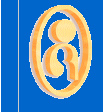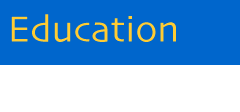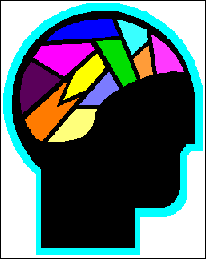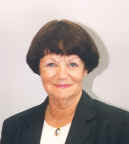



A Gift We All Share
Every child is gifted – it’s up to parents and teachers to unlock their potential.
Below, in an exclusive extract from her new book, RAYWYN RAMAGE explains why many children are failing. And, she tells YVONNE MARTIN about five ways you can help your child to achieve!
THE WAYS children learn and develop may be just as varied as their personalities. Patterns of learning, behaviour and personality are directly related to how an individual’s brain is laid out and how effectively the brain’s chemistry allows messages to be conveyed. External stimulation is critical to the healthy development of the brain. And at no time is this more so than during a child’s first three years.
Brain dominance helps us identify each child’s learning style and develop a learning environment that best suits that child. The illustration below will tell you whether your child is more right or left-brain dominant. In certain situations your gifted child may act more in accordance with either right or left-brain characteristics.
LEFT BRAIN Attributes
ANALYTIC LEARNERS LIKE:
* Facts - concrete reality
* Logic - separate parts
* Doing things one at a time -sequential
* Examining the parts
* Being on time or early
* Being well organised
* Attention to detail
* Speaking & listening
* Arthmetic
* Control of situations
* Careful planning
* Self-orientation
* Seeing black & white
* Action - doing things
* Being positive
* Formal style
* Serious approach
* Competitive
* Rational thinking
* Individual spacePOTENTIAL PROBLEMS
Could develop...
* Driving perfectionists
* Narrow minded
* See parts, miss whole
* Quick decision / sudden
change difficulties
* Can lack feelingsSTRENGTHS
* Get things done
* Works through things in a
systematic way
* Thorough planners
* Are positive and go for goals
* Thrive on competition
* Energetic and cheerfulRIGHT BRAIN Attributes GLOBAL LEARNERS LIKE:
* Understanding the whole thing
* Bringing ideas together
* Doing several things at once
* Spontaneity - being impulsive
* Integrating in a holistic way
-seeing the whole
* Connecting ideas into
unexpected patterns
* Creating new concepts and
ideas
* Imagination, fantasy &
day-dreaming
* Music and dance
* Colour and visual images
* Humour, laughter and fun
* Informal environment
- don't see mess
* Sociable, informal and group activities
* Art and creativity
* Exploring new ideas,
eveloping and pioneering
* Mathematics (emphasis on
patterns)
* Forgetting about time -often late
* Receiving encouragement and support
* Team work
* Feeling and emotionsPOTENTIAL PROBLEMS
Could be...
* Prone to depression
* Fail to get things finished
* Prone to mood swings
* Go blank under pressure
e.g. exams
* Live happily in a mess
* Be impulsive
* Flit from one activity to anotherSTRENGTHS
* Enjoy people and have fun
* Full of music and rhythm
* Creative thinking and ability
* Think in patterns to develop
ideas
* Strong mathematical ability
* Strong long term memory
* Strong design/inventive abilitiesMany gifted children go unrecognised simply because they are operating with a brain dominance at odds with their parents and teachers.
Schools have traditionally valued children who learn well by sitting still, listening, speaking, reading and writing as directed, as being cleverer than those whose brain layout favours a different style of learning
Logical, verbal, organised left-brain dominants (many of our teachers) find many right brain characteristics sloppy, careless, irrational and unfocused. So thousands of highly gifted, creative, original, very clever children are labelled as lazy, limited and "just average".
For really effective learning and living, we need to use the functions of both sides of our brain, integrated and working together. We know that the left brain organises information in a clear, logical fashion so that the right brain can then explore relationships and patterns leading to an expansion of thinking. The left brain then organises the expanded information and so the process goes on. Information moves back and forth between left and right brains being constantly developed and refined.
Brain linkage, the vital part of the brain that gets left and right working together, is still far from mature when baby is born. The efficiency of the brain linkage inevitably has a major influence on the efficiency and integration of the brain. For optimum ability, a mature and effective brain linkage system is essential.
In the early years, while language and muscle control are still developing, children operate mainly through their right-brain talents, which means they need plenty of visual and active learning. Getting the brain "up and working" in this way inevitably leads to the above mentioned information swap between the two brains, all the time strengthening brain linkage.
We can support brain linkage ‘development with fun activities. You and your children will get a lot of enjoyment from exercise sessions, which involve using the left leg while swinging the right arm and -vice versa, doing lots of crawling type movements and dances such as the highland fling! Exercising both sides of the body in this way fosters healthy brain linkage because each side of the brain controls movement in the opposite side of the body. The left half of the brain controls the right half of the body, including the right arm and leg, the ear and eye, and all fine and gross motor skills. The right half of the brain controls the left half of the body, including the left arm and leg, the ear and eye, and all fine and gross motor skills.
This becomes particularly significant for children who have sight or hearing problems with one eye or ear. For instance, left-ear information goes into the right side of the brain and gets processed first. I wonder if repeated ear infections in one ear can influence brain dominance?
Motor development and brain linkage go hand in hand. While we can certainly provide conditions that ensure this development occurs to its optimum, we cannot necessarily accelerate it. Each child needs to move through the stages that precede some stage of motor development, such as walking, at his or her own pace. Doing so is vital to ensuring strong brain linkage.
Parents often encourage babies to walk as soon as possible and use walker trainers to speed the process, but I do not support this. Walker trainers cut short the crawling activities essential to your gifted child’s very important stage of brain linkage development. Good brain linkage is strengthened by the appropriate physical cross-movements (left, right; left, right) that babies do naturally when crawling, so let them keep at it!
GIRLS tend to have a heavier brain linkage system than boys. Thus girls relay more messages back and forth between right and left brain. Boys may not express their feelings or ideas so readily in words, because they have a lighter brain linkage and tend to focus an activity on one side of the brain - right or left - at one time.
Many little girls often have a highly developed verbal area and speak and listen carefully from an early age. They do it easily and well. Many little boys are not so strong in language development. They like to move a lot (they have trouble sitting still) and they have a well-developed area of spatial understanding, which enhances math’s ability. Research shows that many of these children do much better work when they are allowed to stand up and move around, but very few classrooms accommodate such behaviour.
However, just as every individual has a particular combination of right and left brain characteristics, he or she also has a mixture of male and female characteristics. Some little boys speak early and fluently. Some little girls are always on the go. We owe it to our gifted children to accept and address the following challenges:
- Understand that brain layout is a major factor driving each gifted child’s learning and behaviour.
- Appreciate the particular balance of characteristics that makes up your gifted child.
- Acknowledge that every child is an integrated mixture of right and left-brain and of analytic and global learning characteristics.
- Accept the consequent behavioural, personality and earning differences between all people and let them live and learn according to their strengths.
- Ensure your gifted baby and toddler gets lots of movement for healthy cross linkage of both sides of the brain.
- Consider chemical dysfunction and allergy as a possible cause of poorly integrated brain functioning and consequent learning and / or behaviour difficulties.
- Consider that gender may be a significant determinant of behaviour and personality.
- Acknowledge the giftedness of every child - male and female.
- Ensure that no person is barred from any learning activity on the basis of gender. Recognise that intuition (often used by right brain dorninants who are more likely to be female) is a valid cognitive process.
- Respect the needs of many children (most of whom will be male) for space and action and doing things, and support them so that they may use their talents in very positive ways.
- Develop parenting and education practices that meet the individual and different needs of every child in our care.
From Every Child is a Gifted Child, by Raywyn Ramage, Kea Press
Please send $29.95 with your delivery address to P.O.Box 25 225, Christchurch
Reproduced with permission from the New Zealand Sunday Star Times © 1997
Nurturing needed to fulfil potential!
CHILDREN were once on the intellectual prowess of their families and treated accordingly at school. Bright parents were thought likely to produce clever children; the offspring of dim parents were never expected to be high-fliers. For years, the gifted few were creamed off the top of classroom rolls and nurtured in special programmes to reach their maximum potential.
But a new book by Raywyn Ramage, a Christchurch teacher of 40 years, explores the theory that every child is gifted and it is up to parents and teachers to unlock their potential through creative teaching.
"All children deserve a programme of gifted education that allows each one to learn in a way that suits the individual's learning style and expands from individual interests," says Mrs Ramage.
"I strongly object to these programmes being made, available only to the chosen few.
Gifted programmes should be the norm."Every Child is a Gifted Child is based on the concept that children want to achieve, both for themselves and to be parent pleasers. "They can always do far more than we think they can. But because they want to please us, children often achieve at the level we expect of them."
A former principal of Rangi Ruru Girls' School in Christchurch, Mrs Ramage now heads the New Zealand College of Early Childhood Education.
Together with colleagues, she has developed, PAL (pro-active learning) nurseries and schools. She has also tried her methods on her two daughters and now, four grandchildren."I would say it is working very well with them. We use the approach that every child has an individual package, developed around what they are interested in."
These gems are simple, but effective, she says.
- Paint the positive picture. Cut out the "don'ts". "No" is also off the list. Turn it into a request and always give a reason. "Please no, we don't hit other people because it hurts them".
- Ask children to co-operate and help out. Pretending to be helpless works wonders. "I pretend I am tired and they will leap all over the place doing things for you."
- Give children options and help them work through them. It teaches children to think for themselves and make decisions.
- Ask co-operative questions that neither of you know the answer to. Work it out together.
- Physical punishment is out. Mrs Ramage feels strongly that hitting children does not work, breeds violence and kills giftedness!





